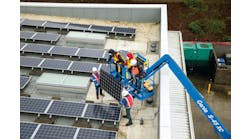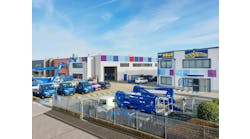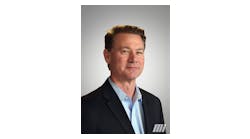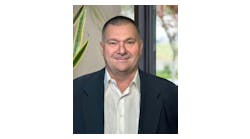The Safe Access, Fall Protection & Training (SAF-T) Conference will take a look at a wide range of issues in regard to aerial safety, attempting to clarify and spread awareness about aerial safety. The promoter of the conference is Maximum Capacity Media, publisher of Lift & Access magazine. MCM CEO Guy Ramsey was owner and operator of a rental company and CEO of one of the U.S.’ largest rental companies, Vibroplant. (American High Lift) and now publishes the leading U.S. magazine about the aerial industry. Ramsey has nearly 30 years experience in the aerial market. RER editor Michael Roth spoke with Ramsey last week about the upcoming conference and need for improved aerial safety practices.
RER: At this point, 2007, why is an aerial safety conference important? Isn’t there plenty of information available about aerial safety?
Ramsey: There’s a ton of information out there but a lot is different information and there’s a lot of misinformation. What precipitated the desire to do this was a conversation I had with an organization that was telling me they could offer ANSI-level or ANSI-prescribed training for aerial work platforms on a CD that took 30 minutes or less. In probing that, this national organization that had nothing to do with the rental business but had a lot to do with training, basically believes and has delivered thousands of these training programs to organizations that now have a false sense of security that they have trained their operators to meet ANSI standards. In talking to people about the advent of online training, companies like Genie that are developing online training, and several independent organizations that have developed online training, there appears to be some ambiguity with regards to what is or isn’t an adequate level of online training.
There doesn’t appear to be any consensus about how much time is the correct amount of time to train, whether it be classroom or online. ANSI is vague in regards to that, so my hope is to start conversations as to what is the correct or appropriate amount of training for a trainer and for an operator. So there doesn’t seem to be a consensus on that point within the industry. Everybody will give you a different answer. I believe the timing is right to try to address that, especially with this rush to the Internet. As more people are rushing to the Internet, we need to get our arms around where we are going with Internet training. So that’s one of the key issues that will be discussed by the training panel.
Is fall protection a major topic?
Yes. As we are going to coin it, for aerial work platforms: fall protection or is it ejection protection? The reality is boomlifts are singled out for being required to use fall protection because of the potential to be ejected from the platform versus falling out of the platform. You can fall out of a scissorlift, you can fall out of a boomlift, but scissorslifts do not require, or the ANSI regulations don’t specifically call out for, the use of fall protection in a scissorlift, as they do in a boomlift. And the reasoning is you can be ejected from a boomlift, so it’s really not fall protection, it’s ejection protection. The way you deal with that is by having a lanyard that is short enough to keep you in the basket.
How long should that lanyard be? Should it be a different length for every size platform, should it be adjustable, if it’s adjustable how do you monitor that adjustment so that it stays the right length? If a guy adjusts it out as far as he can for an eight-foot basket and he gets in a six-foot basket, it’s not by some definition appropriate, it’s an 8-foot lanyard rather than a 6-foot? So we need to come to a consensus and clarify some of the misunderstandings that do exist in regard to issues that are clearly delineated within the standards. There are things that are very clear that people still do not fully understand.
Tony Groat, who is one of heads of AWPT will make a presentation on where we are with regards to the ANSI standards and most recently published standards and try to clarify “this is the old, this is the new and this is what you need to understand in a clear way.” This is what has changed and this is what you need to know.” We’re going to leave that to the panels to discuss. So it’s clarification on some of the basics with regard to the ANSI standards. He’ll offer a clarification on what is clear cut. We’re trying to get the industry to get its arms around issues that are not so clear cut and start debate if nothing else.
How would you assess the overall aerial safety awareness in the world today compared to, let’s say, 5 or 10 years ago?
What has progressed is when you go on any jobsite now your chances of finding someone actually wearing fall protection are probably twice or three times better than they were five years ago. I’m pleased that on a lot of jobsites that I do visit fairly frequently, it’s fairly common, but I can also drive by a major jobsite as I did yesterday in downtown Scottsdale, where I saw two guys on an 80-foot boom, and this is a major contractor, without fall protection. There are still lots of needs out there. I believe that the key to continue this awareness is, and one of things discussed by one of our speakers Joe Feldstein with MSA — people like AGC and big construction company organizations will be key long-term, along with the unions, to making sure people are aware if not educated about the requirements. Awareness is the first step and education is the second step. If a lot of people are at least aware of what the requirements are we stand a chance of at least delivering the message to them.
The other real key and what I’m hoping more than any thing else that will come out of this event is that it’s the first time that I’m aware of where all the major manufacturers and representatives from many of the aerial work platform training organizations and key people from major rental organizations will be in the same place at the same time, and with the proper fostering there can be a level of understanding that everybody is in the same boat and even though we’re all competitors in some way, that everybody will benefit from inter-industry cooperation, which needs to be much greater than it has been in the past.
What about rental companies? Aren’t rental companies fairly knowledgeable when it comes to passing on safety information to their customers?
It gets down to people showing a level of commitment. We’re hoping for smaller rental companies to attend, even though it’s harder for them to attend events like this, or any event where they might have the opportunity to look at resources from third parties to provide training. There are lots of resources out there that they might not be aware of that can make their jobs simpler. The mid-sized rental companies are probably doing the best job because they do have the resources and they are close enough to the situation to realize its importance and that it’s a profit center for them to deliver a quality training program.
In trying to work with major rental companies, there are vast differences with regard to how they are doing. Sunbelt Rentals, RSC, Sunstate Equipment, and Ahern Rentals to a degree, have stepped to the front of the line in training and providing a safer workplace. Sunbelt is the forefront, there are a number of people very committed to training and safety in that organization.
Manufacturers have also come on board, I’m very pleased that every manufacturer got on board immediately, recognizing this is an important subject
Where can our readers obtain more information?
Go to www.saf-tconference.com.





